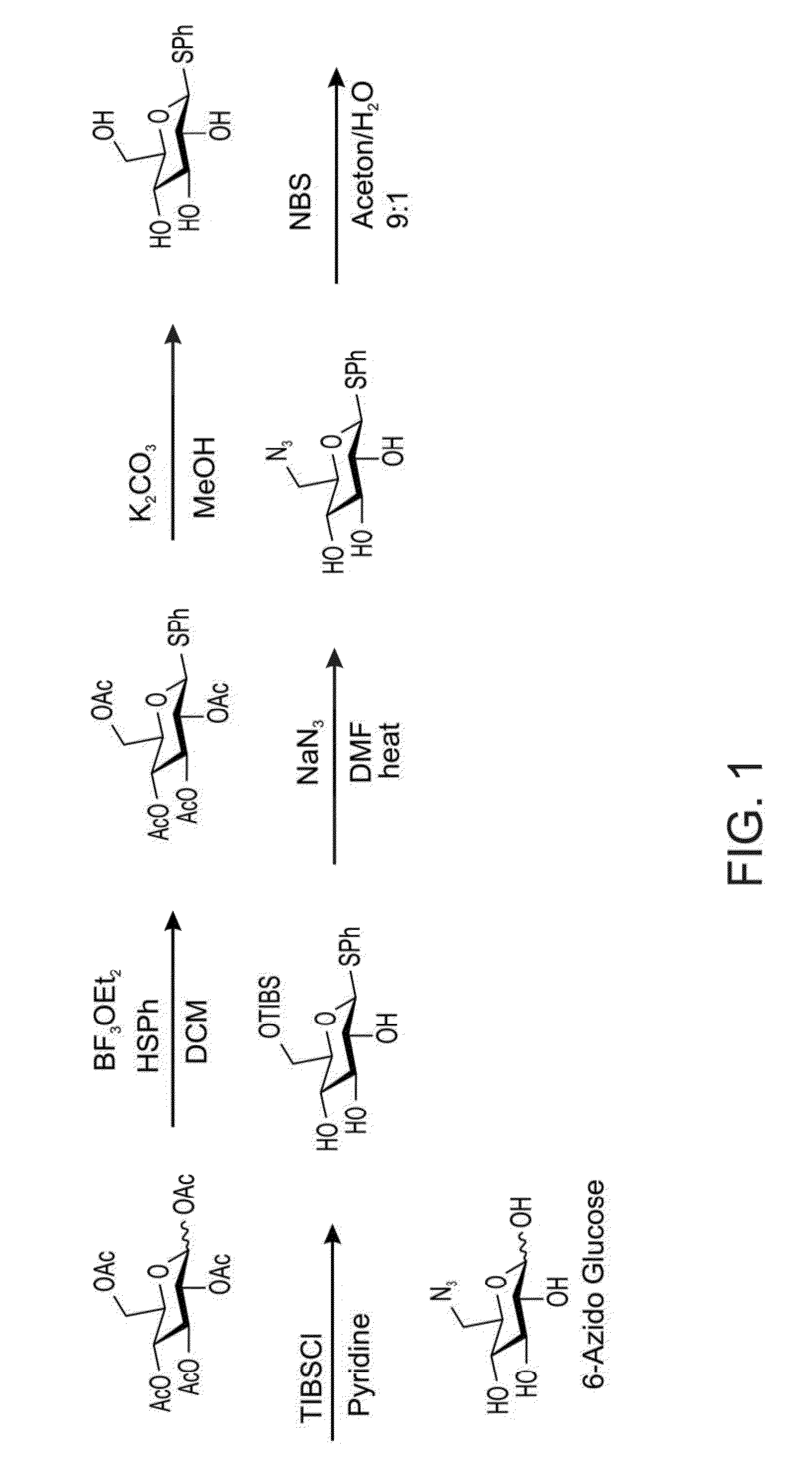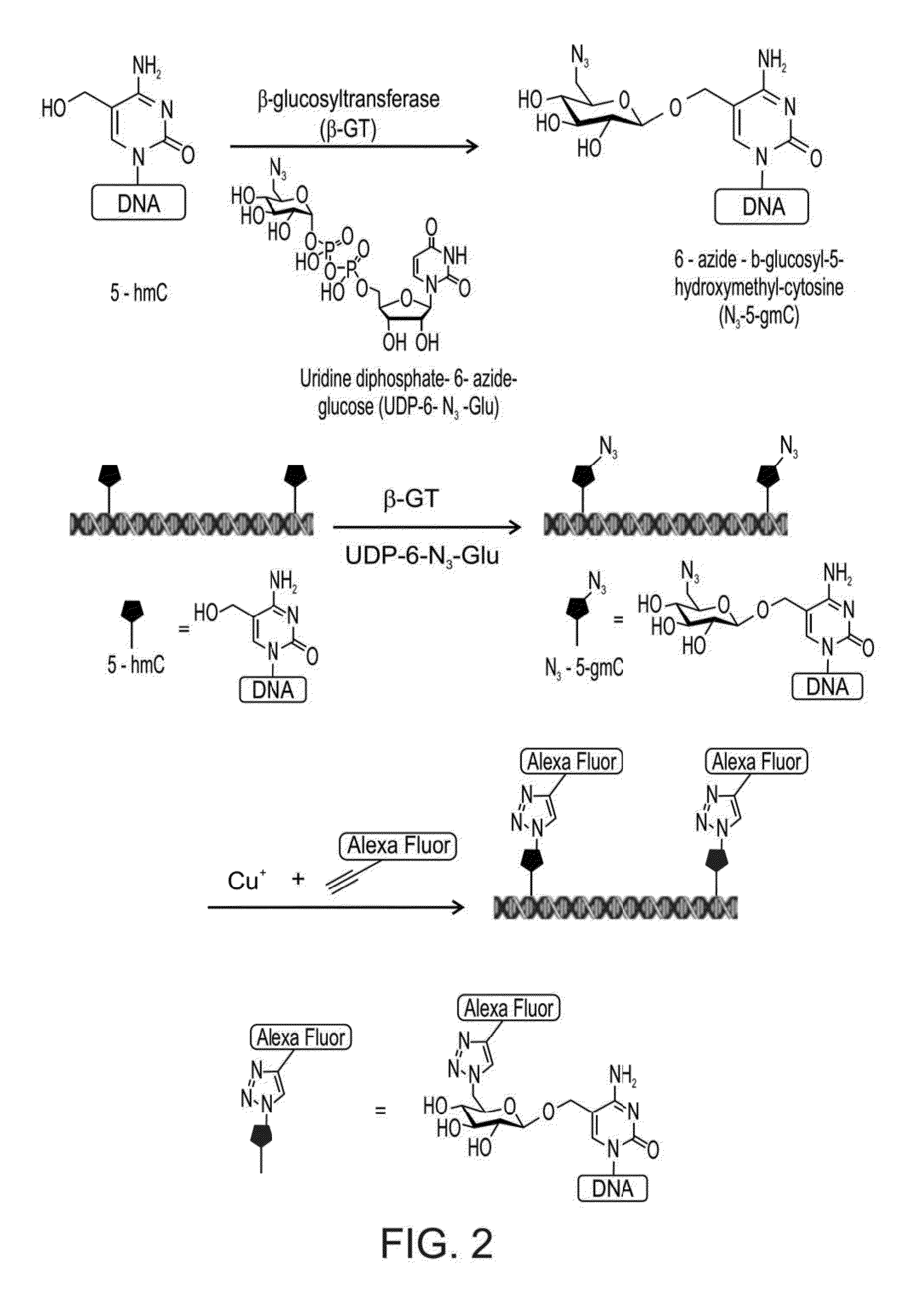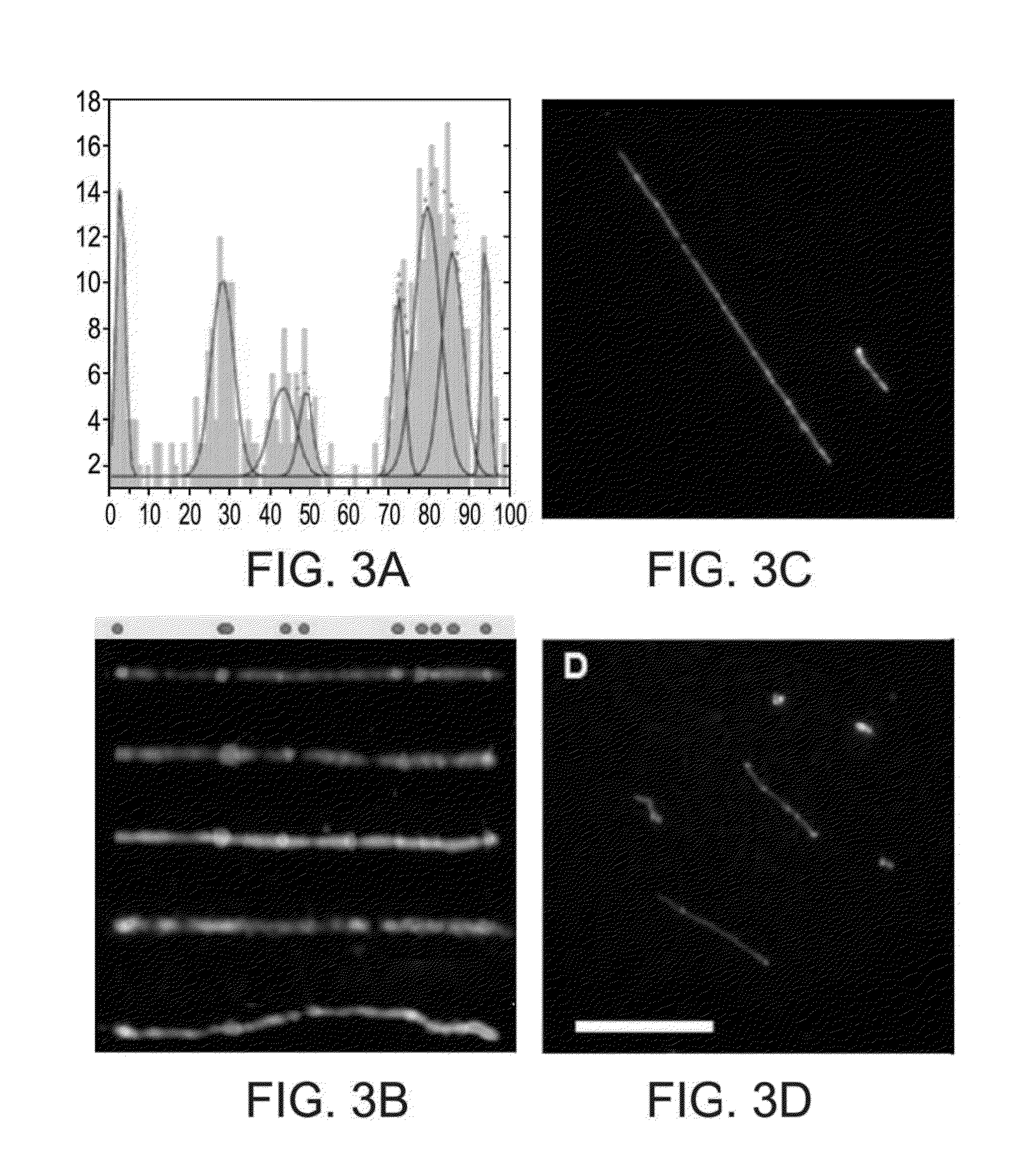Detection of hydroxymethylcytosine bases
a technology of hydroxymethyl cytosine and cytosine, which is applied in the field of molecular biology, can solve the problems of difficult detection of variation by current technologies, and achieve the effect of low resolution and high sensitivity
- Summary
- Abstract
- Description
- Claims
- Application Information
AI Technical Summary
Benefits of technology
Problems solved by technology
Method used
Image
Examples
example 1
5hmC Labeling
Material and Experimental Methods
Synthesis of UDP-6-Azide Glucose
[0295]The T4 bacteriophage uses the enzyme β-glucosyltransferase (β-GT) to glucosilate hydroxylated bases in its DNA. Recently, a selective chemical method for the labeling of 5hmC was developed. In this method β-GT was exploited in order to transfer an azide-substituted glucose (UDP-6-N3-Glu) onto the hydroxyl group of 5hmC to form β-6-azide-glucosyl-5-hydroxymethyl-cytosine (5-N3-gmC). The presence of an azido moiety paves the way for 5hmC labeling using a click chemistry reaction by the addition of an alkyne substituted dye.
[0296]The main bottleneck of this labeling process is the cofactor UDP-6-N3-Glu, which can be synthesized or purchased but with very high costs.
[0297]Herein, an enzymatic approach is used in order to have high yields of UDP-N3-Glu. A glucose azide (see FIG. 1) is used as a substrate for a sequential enzymatic cascade.
[0298]The glucose azide can be synthesized as described in FIG. 1, ...
example 2
5hmC Labeling is Sensitive and can be Done in High Throughput Settings
[0330]Example 1 above establishes the use of some embodiments of the present methodology for the quantification of global % hmC in a given sample. The technique is based on covalent labeling of hmC moieties by an enzymatic reaction, which is followed by the Huisgen cycloaddition of an alkyne to an azide moiety. Fluorescently labeled alkynes are used to fluorescently label hmC so that a ratiometric measurement of the adsorption intensities of the fluorophor relative to the DNA, at 260 nm, can be obtained. These measurements were conducted on a nanodrop spectrophotometer. A drop of 1 μl containing 1650 ng / μl of DNA was required in order to detect 0.02% hmC in a given sample. This is a highly concentrated sample which could sometimes be challenging to achieve. Each sample is measured separately since only one drop could be measured at a time.
[0331]Following is an improved ratiometric detection method which is based o...
PUM
| Property | Measurement | Unit |
|---|---|---|
| concentration | aaaaa | aaaaa |
| concentration | aaaaa | aaaaa |
| threshold | aaaaa | aaaaa |
Abstract
Description
Claims
Application Information
 Login to View More
Login to View More - R&D
- Intellectual Property
- Life Sciences
- Materials
- Tech Scout
- Unparalleled Data Quality
- Higher Quality Content
- 60% Fewer Hallucinations
Browse by: Latest US Patents, China's latest patents, Technical Efficacy Thesaurus, Application Domain, Technology Topic, Popular Technical Reports.
© 2025 PatSnap. All rights reserved.Legal|Privacy policy|Modern Slavery Act Transparency Statement|Sitemap|About US| Contact US: help@patsnap.com



